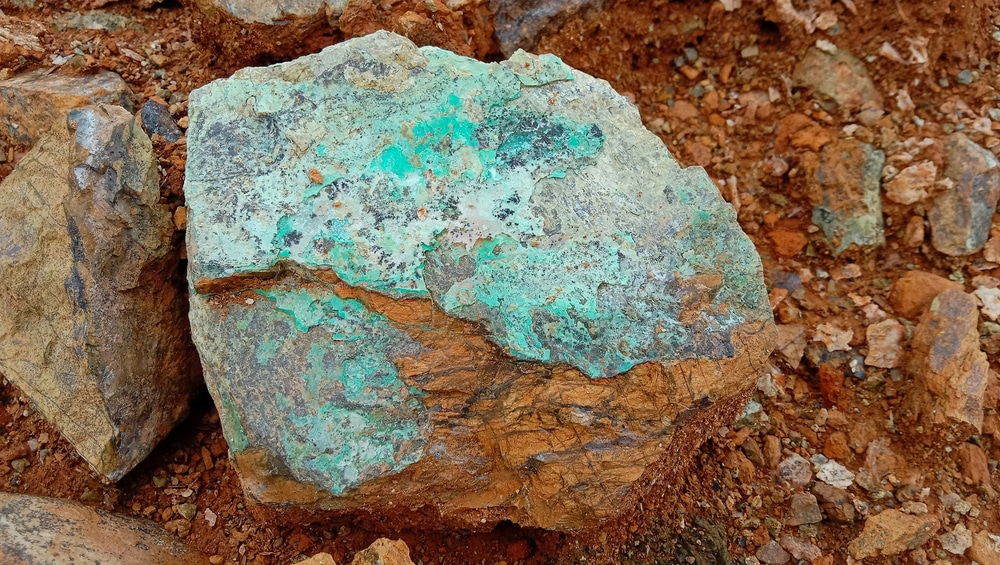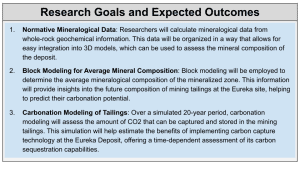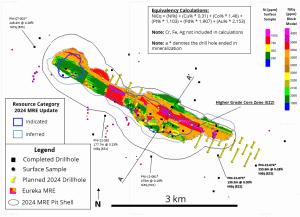Alaska Energy Metals Corporation has announced a pioneering collaboration with the Colorado School of Mines and Virginia Polytechnic Institute (Virginia Tech). This partnership aims to evaluate the carbon sequestration potential of its Eureka nickel deposit at the Nikolai project in Alaska.
The collaboration aims to evaluate how much carbon dioxide (CO2) can be captured and stored by the project while simultaneously extracting critical minerals for the energy transition. These include nickel, copper, cobalt, and platinum group metals (PGMs).
Greg Beischer, President and CEO of Alaska Energy Metals, emphasized the importance of sustainable mining, saying that:
“U.S. domestic mining is essential for both the electrical energy expansion and U.S. national security. For these reasons, we have intentionally begun to study and assess the use of modern technological innovations like ultramafic mine tailings carbonation at the early stages of the development phase of our project.”
Ultramafic Rocks: Nature’s Carbon Vaults
The Eureka deposit contains more than 8 billion pounds of nickel, embedded in ultramafic rocks that are rich in magnesium. These rocks have a unique capability: they naturally react with atmospheric carbon to form carbonate minerals, which trap CO2 for a long time. This natural process, known as carbon sequestration, locks CO2 in solid rock, providing a long-term solution to storing greenhouse gasses.
Typically, ultramafic rocks remain buried beneath the Earth’s surface, limiting their interaction with carbon dioxide. However, mining operations provide an opportunity to bring these rocks to the surface. Crushing the rock to extract valuable minerals exposes more surface area to the atmosphere, creating ideal conditions for carbon sequestration.
Cutting-Edge Research and Technology
In 2023, the Colorado School of Mines received a grant from the U.S. Department of Energy’s Advanced Research Projects Agency-Energy (ARPA-E) to develop new technologies for assessing the carbon-absorbing potential of ultramafic deposits. These deposits are enriched with essential metals like nickel, copper, and PGMs, which are vital for the energy transition.
The program focuses on using advanced scanning technologies and machine learning algorithms to analyze the potential of these rocks to capture carbon. These technologies are now being applied to Alaska Energy Metals’ Nikolai project. The goal is to better understand how the Eureka deposit can help mitigate climate change by sequestering carbon.
The research will be essential in understanding the environmental benefits of the mining operation and its potential economic advantages. The partnership between Alaska Energy Metals, Colorado School of Mines, and Virginia Tech aims to deliver these specific outcomes:
Eureka Deposit: A World-Class Resource
The Eureka deposit in Nikolai project contains a vast resource of potentially carbon-absorbing ultramafic rock. According to calculations, the deposit holds:
- Indicated resource: 813 million metric tons averaging 0.22% nickel (3.88 billion pounds), 0.07% copper (1.28 billion pounds), 0.02% cobalt (303 million pounds), and 0.15 grams per metric ton palladium-platinum-gold (4 million ounces).
- Inferred resource: 896 million metric tons averaging 0.21% nickel (4.23 billion pounds), 0.05% copper (1.04 billion pounds), 0.02% cobalt (327 million pounds), and 0.12 g/t palladium-platinum-gold (1.3 million ounces).
These resources represent a significant source of metals critical to renewable energy technologies and an enormous opportunity for carbon sequestration.
Key Research Objectives
The first phase of the study will focus on quantifying and characterizing the magnesium-rich minerals within the Eureka deposit. Key minerals such as brucite, olivine, pyroxene, and anorthite will be examined for their carbon-absorbing potential.
Previous research from the University of British Columbia has identified brucite as a particularly effective mineral for carbon sequestration.
Once these magnesium minerals have been thoroughly studied, researchers will use reactive transport modeling to simulate how much carbon can be sequestered into one ton of mining tailings. This model will provide a clear framework for estimating the carbon footprint reduction associated with nickel production at Eureka.
Pioneering Sustainable Mining for National Security and Energy Independence
The Eureka deposit, with its potential to supply energy-related metals, represents a significant opportunity for the U.S. to reduce its reliance on foreign sources of critical minerals.
The study findings will be instrumental in determining how much carbon can be captured by the mine’s tailings and wastes. These findings will provide a roadmap for implementing carbon capture technologies in future mining operations. As such, it can potentially help reduce the carbon footprint of nickel and other critical metal production.
Furthermore, this research may reveal economic benefits associated with carbon sequestration, such as the possibility of generating carbon credits. These credits can be sold to companies seeking to offset their emissions.
- READ MORE: Generating Carbon Credits from Mining Waste
As governments and industries seek ways to reduce carbon emissions, projects like Eureka can play a crucial role in achieving net zero goals.
Alaska Energy Metals’ collaboration with the Colorado School of Mines and Virginia Tech represents a forward-thinking approach to mining in the 21st century. By integrating carbon sequestration into the mining process, AEMC is positioning itself as a leader in sustainable resource extraction. Its Eureka deposit could serve as a model for future carbon-neutral mining projects.



